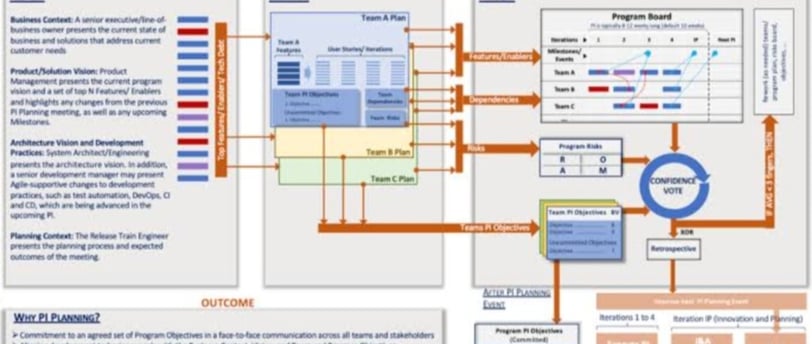Roles and Responsibilities in Agile Organizations
PI Overseer vs SRT Observer vs Agile Auditor vs Enterprise Agile Coach
Roopesh Yogiputr Mathur CTO AgileDevOps Smart Management Consultancy
5/5/20242 min read


1. PI Overseer
The PI Overseer is a role in the Scaled Agile Framework (SAFe) that is responsible for overseeing the Program Increment (PI) planning and execution. Their main responsibilities include:
- Facilitating the PI planning event, where teams come together to plan the work for the upcoming PI.
- Ensuring alignment and coordination between different Agile Release Trains (ARTs) within the organization.
- Monitoring the progress of the PI and identifying any issues or risks that may impact its success.
- Providing guidance and support to the ARTs and teams during the PI execution.
- Collaborating with other PI Overseers to ensure cross-ART dependencies are managed effectively.
2. SRT Observer
The SRT Observer, also known as the System Reliability Team Observer, is a role in the context of DevOps and Site Reliability Engineering (SRE). Their main responsibilities include:
- Monitoring the reliability and performance of the system or application in production.
- Collecting and analyzing data to identify any potential issues or bottlenecks that may impact the system's reliability.
- Working closely with the development and operations teams to address any identified issues and improve the overall reliability of the system.
- Participating in incident response and post-incident reviews to understand the root causes of any system failures and suggest preventive measures.
- Providing feedback and recommendations to the development teams on improving the system's architecture, scalability, and reliability.
3. Agile Auditor
The Agile Auditor is a role that focuses on ensuring compliance with Agile principles and practices within an organization. Their main responsibilities include:
- Reviewing and assessing the organization's Agile processes, practices, and artifacts to ensure they align with Agile principles and industry best practices.
- Identifying any gaps or areas of improvement in the Agile implementation and suggesting corrective actions.
- Conducting audits and assessments of Agile projects to evaluate their adherence to Agile methodologies and standards.
- Providing recommendations and guidance to project teams and stakeholders on how to improve their Agile practices and achieve better outcomes.
- Collaborating with other Agile auditors and Agile coaches to share best practices and continuously improve the Agile auditing process.
4. Enterprise Agile Coach
The Enterprise Agile Coach is a role that focuses on guiding and supporting organizations in their Agile transformation journey. Their main responsibilities include:
- Providing coaching and mentoring to leaders, managers, and teams to help them understand and adopt Agile principles and practices.
- Assessing the organization's current state of Agile maturity and developing a roadmap for Agile transformation.
- Facilitating workshops, training sessions, and Agile ceremonies to build Agile knowledge and skills within the organization.
- Working with different teams and departments to identify and address any organizational barriers or challenges to Agile adoption.
- Measuring and tracking the progress of Agile transformation and providing feedback to the organization's leadership.
By understanding the roles and responsibilities of PI Overseer, SRT Observer, Agile Auditor, and Enterprise Agile Coach, you can effectively answer questions related to these roles in top management, technical, and HR rounds. It is important to highlight the specific expertise and value each role brings to the organization in terms of scaling Agile, ensuring system reliability, ensuring compliance, and driving Agile transformation.
